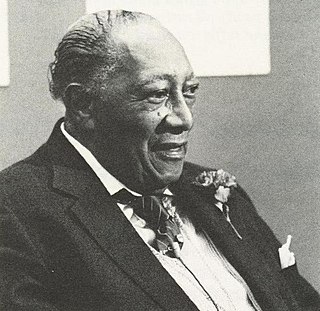
James Augustus Van Der Zee was an American photographer best known for his portraits of black New Yorkers. He was a leading figure in the Harlem Renaissance. Aside from the artistic merits of his work, Van Der Zee produced the most comprehensive documentation of the period. Among his most famous subjects during this time were Marcus Garvey, Bill "Bojangles" Robinson and Countee Cullen.
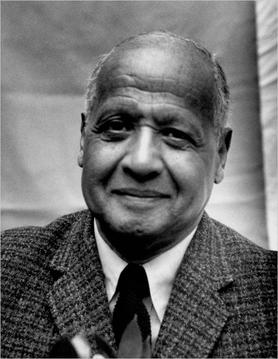
Roy Rudolph DeCarava was an American artist. DeCarava received early critical acclaim for his photography, initially engaging and imaging the lives of African Americans and jazz musicians in the communities where he lived and worked. Over a career that spanned nearly six decades, DeCarava came to be known as a founder in the field of black and white fine art photography, advocating for an approach to the medium based on the core value of an individual, subjective creative sensibility, which was separate and distinct from the "social documentary" style of many predecessors.

Barkley L. Hendricks was a contemporary American painter who made pioneering contributions to Black portraiture and conceptualism. While he worked in a variety of media and genres throughout his career, Hendricks' best known work took the form of life-sized painted oil portraits of Black Americans.

Norman Wilfred Lewis was an American painter, scholar, and teacher. Lewis, who was African-American and of Bermudian descent, was associated with abstract expressionism, and used representational strategies to focus on black urban life and his community's struggles.

Janette Beckman is a British documentary photographer who currently lives in New York City. Beckman describes herself as a documentary photographer. While she produces a lot of work on location, she is also a studio portrait photographer. Her work has appeared on records for the major labels, and in magazines including Esquire,Rolling Stone,Glamour,Italian Vogue,The Times,Newsweek,Jalouse,Mojo and others.

Ronald "Charlie" Phillips, also known by the nickname "Smokey", is a Jamaican-born restaurateur, photographer, and documenter of black London. He is now best known for his photographs of Notting Hill during the period of West Indian migration to London; however, his subject matter has also included film stars and student protests, with his photographs having appeared in Stern, Harper’s Bazaar, Life and Vogue and in Italian and Swiss journals. Notable recent shows by Phillips include How Great Thou Art, "a sensitive photographic documentary of the social and emotional traditions that surround death in London's African Caribbean community".
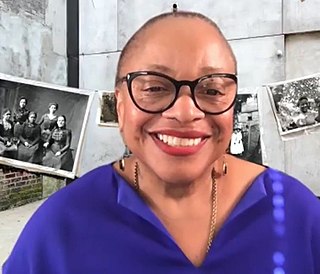
Deborah Willis is a contemporary African-American artist, photographer, curator of photography, photographic historian, author, and educator. Among her awards and honors, she is a 2000 MacArthur Fellow. She is currently Professor and Chair of the Department of Photography and Imaging at Tisch School of the Arts of New York University.
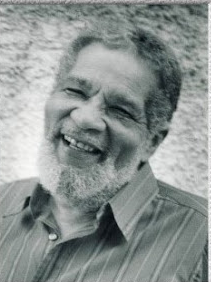
Herbert Alexander Gentry was an African-American Expressionist painter who lived and worked in Paris, France, Copenhagen, Denmark (1958–63), in the Swedish cities of Gothenburg (1963–65), Stockholm, and Malmö (1980–2001), and in New York City (1970–2000) as a permanent resident of the Hotel Chelsea.

Harold Martin Feinstein was an American photographer.
Anthony Barboza is a photographer, historian, artist and writer. With roots originating from Cape Verde, and work that began in commercial art more than forty years ago, Barboza's artistic talents and successful career helped him to cross over and pursue his passions in the fine arts where he continues to contribute to the American art scene.
Betty Blayton was an American activist, advocate, artist, arts administrator and educator, and lecturer. As an artist, Blayton was an illustrator, painter, printmaker, and sculptor. She is best known for her works often described as "spiritual abstractions". Blayton was a founding member of the Studio Museum in Harlem and board secretary, co-founder and executive director of Harlem Children's Art Carnival (CAC), and a co-founder of Harlem Textile Works. She was also an advisor, consultant and board member to a variety of other arts and community-based service organizations and programs. Her abstract methods created a space for the viewer to insert themselves into the piece, allowing for self reflection, a central aspect of Blayton's work.

John P. Jacob is an American curator. He grew up in Italy and Venezuela, graduated from the Collegiate School (1975) in New York City, and studied at the University of Chicago before earning a BA in human ecology from the College of the Atlantic (1981) and an MA in art history from Indiana University (1994).
Jacolby Satterwhite is an American contemporary artist who creates immersive installations. He has exhibited work at the Minneapolis Institute of Art, the Museum of Contemporary Art, Chicago, Louis Vuitton Foundation in Paris, the New Museum and the Museum of Modern Art, both in New York City, and the Institute of Contemporary Art, Philadelphia. In addition to MoMA, his work is in the public collections of the Studio Museum in Harlem, the Seattle Art Museum, the Whitney Museum of American Art, the Kiasma, and the San Jose Museum of Art. Satterwhite has also served as a contributing director for the music video that accompanied Solange's 2019 visual album When I Get Home and directed a short film accompaniment to Perfume Genius's 2022 studio album Ugly Season.

Salamishah Margaret Tillet is an American scholar, writer, and feminist activist. She is the Henry Rutgers Professor of African American Studies and Creative Writing at Rutgers University–Newark, where she also directs the New Arts Justice Initiative. Tillet is also a contributing critic-at-large at The New York Times.
June Clark is a Toronto-based artist working in photography, sculpture and collage. Formerly known as June Clark-Greenberg, her autobiographical works explore issues of history, memory and identity through reflections on her Harlem childhood and subsequent migration to Canada as a young adult.

Ming Smith is an American photographer. She was the first African-American female photographer whose work was acquired by the Museum of Modern Art in New York City.
Winifred Hall Allen was a Jamaican-American photographer who documented the Great Depression and the Harlem Renaissance. Her work explored the role of African Americans within professional and social realms. Her identity as a female African-American artist facilitated her ability to photograph within various Harlem communities.
Elle Pérez is an American photographer whose work explores gender identity, intimacy, vulnerability, and the relationship between seeing and love. Pérez is a gender non-conforming trans artist. They are currently an Assistant Professor of Art, Film, and Visual Studies at Harvard University. Pérez is represented by 47 Canal and currently lives and works in New York City.
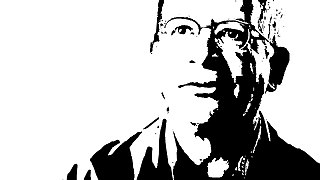
Frank Stewart is an African-American photographer based in New York. He is best known for photographing prominent Jazz musicians.

Before Yesterday We Could Fly: An Afrofuturist Period Room is an art exhibition at the Metropolitan Museum of Art in New York City. The exhibit, which opened on November 5, 2021, uses a period room format of installation to envision the past, present, and future home of someone who lived in Seneca Village, a largely African American settlement which was destroyed to make way for the construction of Central Park in the mid-1800s.


















